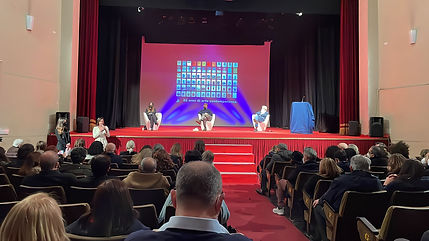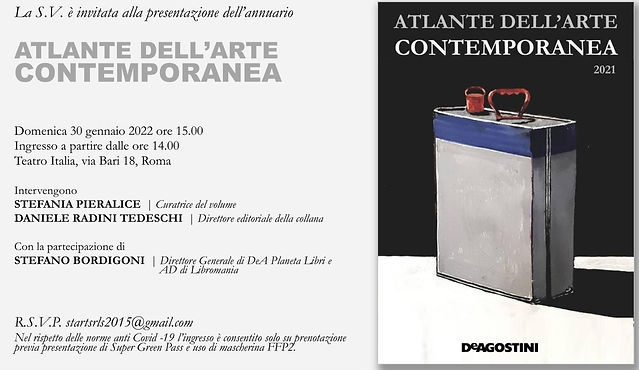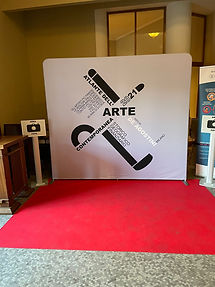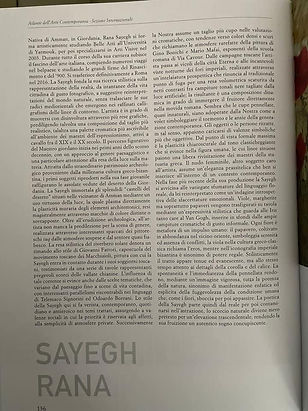
Born in Amman, Jordan, Rana Sayegh was artistically formed studying Fine Arts at Yarmouk University, then specializing in Visual Arts in 2003. Throughout her career she has been fascinated by Italian art, making numerous trips to the country and studying the great names of the Renaissance and the 20th century. She moved permanently to Rome in 2016. Sayegh bases her stylistic research on the representation of reality, from the instant of life. A city with a photographic taste, evocative reinterpretations of the natural world, without neglecting the Middle Eastern roots that emerge in the refined calligraphy of the contour lines. The artist is able to move with ease through multiple graphic renderings. She sometimes preferring a composition with a more realistic cut, other times a chromatic palette more attributable to the environment of the masters of expressionism, active at the turn of the nineteenth and twentieth centuries. The figurative path of the Jordanian Master begins in the early years of the last decade, with an approach to the landscape genre and a particular attention to the rendering of light on matter. Attracted by the extraordinary archaeological heritage coming from the millenary Greek-Byzantine culture, the first subjects reproduced in its youthful phase depict the sunny views of the desert of Jordan. Sayegh immortalizes the splendid "desert castles" located in the outskirts of Amman through a virtuous use of light, which directly models the wall plasticity of the architectural elements, masterfully rendered by distinct or superimposed splashes of colour. In addition to archaeological scholarship, the artist does not lack a predilection for the genre scene, created through interesting insights into the Frankish painters with suspended atmospheres and an almost fairy tale scent. The stylistic rendering of solar glare denotes a reference to the style of Giovanni Fattori, head of the Tuscan Macchiaioli movement, painting with which Sayegh comes into contact during her Tuscan stays, testified by a series of panels depicting valuable views of the Chianine Valleys. The influence of this current is also evident from the thematic choices, which vary from landscape to peasant life scenes, with interesting parallels found in the languages of Telemaco Signorini and Odoardo Borrani. Sayegh's style here becomes realistic, contemporary, every day and anti-heroic in the themes dealt with, rising to social values in which the priority is reserved for affections. to the simplicity of private environments, subsequently our artist takes a darker cut in the chromatic evaluations, with tendencies towards dense and dark colours that recall the rarefied atmospheres of the painting of Gino Bonichi and Mario Mafai, exponents of the Roman school of via Cavour. From the Tuscan countryside, art passes to the alleys of the Eternal City and to the enchanting nocturnal views of the Imperial Forums, created through a perspective frame that renounces the traditional vanishing point for a volumetric rendering resulting from strong contrasts between black tonal backgrounds cut by the light artificial: the result is a dynamic composition able to immerse the user directly in the Roman nightlife. It seems that the dark, almost unnatural brushstrokes are used by our artist as a symbol of the torment and anxieties of the contemporary generation. In this sense, the objects or people portrayed appear charged with symbolic rather than objective values. From a formal point of view, the chiaroscuro plasticity with a classic tone that manifests itself in the human figure, whose sinuous lynxes seem a free reinterpretation of the masters of Greek statuary, is the best. The female nude, another subject dear to the artist, takes on a Praxitelean elegance that fits well into a contemporary context. In the most recent stage of her production, Sayegh she approaches the variegated nuances of the floral language, reinterpreted by her as an introspective investigation of the emotional facets. Violets, daisies but above all poppies are transfigured on the table through a stylistic expressiveness that looks to the Iris so dear to Van Gogh, inserted in backgrounds with large chromatic backgrounds of informal taste. Each flower is a metaphor for a human impulse: the poppy, cultivated in abundance in the Near East, symbolizes serenity and the absence of conflicts, the violet in Greek-classical culture recalls Eros, while in the Byzantine imperial iconography it is synonymous with royal power. Stylistically the line appears soft and evanescent, but at the same time attentive to the details of the corolla and the glass. The spontaneity and immediacy of the brushstroke make, through a vigorous image, all the force of nature, synonymous with the emphatic and explicit manifestation of the fleetingness of the human condition which, like flowers, blossoms and then withers. Sayegh's poetics therefore starts from the real and then becomes contaminated in abstraction, the natural glimpse becomes a mere pretext for a transcendental elevation, making use of her an authentic concupiscent dream .
In addition to being a virtuoso painter, Sayegh is also a leading figure in the artistic community of Arab countries, boasting participation in numerous symposiums in Jordan and Lebanon, collaborating together with the Professional Union Convention of Amman in the creation of three murals for the "Wall Painting "Entifadah - Le banon - Intibah. In addition to personal exhibitions at the Orfoli, Foresight32 and Orthodox in Ammam galleries and the collaboration with the Afkar magazine, sponsored by the Jordanian Ministry of Culture, Our Master work has also found numerous acclaim in Italy Since 2016 she has participated in several group exhibitions at the Contesa Arte International Gallery in via Margutta, obtaining various prizes





